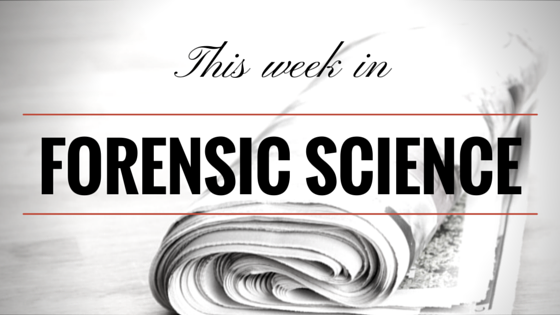No one has hours to scour the papers to keep up with the latest news, so we’ve curated the top news stories in the field of Forensic Science for this week. Here’s what you need to know to get out the door!
UNT DNA Program Funding Loss ‘Incredibly Crippling’, Say Investigators (Forensic Magazine – 5/19/2017)
In previous years, Krebs would send the samples to the national clearinghouse at the University of North Texas Health Science Center, which accepts out-of-state samples to help identify the nameless dead. But this year she can’t. A crucial $1 million in funding from the federal National Institute of Justice was removed earlier this year, and state and local agencies can no longer get the free testing they have come to expect.
How to Sequence DNA in Space (The Atlantic – 5/19/2017)
Last summer, NASA dispatched Kate Rubins, a microbiologist with a doctorate in cancer biology, to try it for the first time.
State Forensic Panel Approves Use of Familial DNA to ID Suspects (Newsday – 5/19/2017)
A special state committee Friday approved a recommendation that New York State adopt the use of familial searching, an emerging DNA procedure employed in some states to identify potential suspects.
Foundling’s Father: DNA Unlocks Secrets of Serial Baby Abandonment Case (CBCNews – 5/21/2017)
- Janet Keall spent decades searching for biological family, but when she finally found the man she believes is her father, she froze.
This BSU Prof Got a Grant to Investigate Wrongful Convictions but Cannot Use it in Idaho (Idaho Statesman – 5/21/2017)
Convicts who believe they were wrongfully convicted of murder or forcible rape may benefit from a $630,000 federal grant to test DNA.
Death Row Inmates Granted Direct DNA Testing Through Ohio Supreme Court Under New Rule (The Blade – 5/22/2017)
Inmates already on death row may appeal a lower court’s decision rejecting access to DNA testing of evidence directly to the Ohio Supreme Court under a new rule adopted today.
7.2-Million-Year-Old Pre-Human Fossils Challenge Modern Human Evolution Theory (CBCNews – 5/22/2017)
A jawbone discovered by German troops in Athens during the Second World War could be evidence that apes and humans diverged 200,000 years earlier than the current theory says.
Study: DNA May Have Only Modest Impact on Sexual Assault Arrests (BBC News – 5/16/2017)
Most arrests in sexual assault cases occur before crime laboratory results are available, a new study found, suggesting that DNA testing may influence arrests in just a small number of cases.The paper is among the first studies to examine the impact of DNA on sexual assault arrest rates, although the researchers said the findings should be interpreted cautiously because of the small sample size of cases used in key analyses.
Bath Salts Research at Sam Houston State Probes Chemicals, Nets Award (Forensic Magazine – 5/24/2017)
Now scientists at Sam Houston State University have completed one of the most thorough looks into the nitty-gritty workings of these illicit drugs—and the work netted a doctoral student a major award for her part on the project.
Forensic Laboratory: What Does This Mean for Rwanda? (The New Times – 5/24/2017)
The enactment of Law No. 41/2016 establishing the Rwanda Forensic Laboratory is an extremely exciting milestone for Rwandans because it translates into speedy reception of analysis results.
44 ‘Hits’ Found in DNA Testing of Old, Backlogged Virginia Rape Evidence (Richmond Times-Dispatch – 5/24/2017)
- DNA testing in 431 cases of collected but previously untested biological evidence recovered in Virginia rape cases has resulted in 44 DNA database “hits.”
Proteins Best Preserved in Bone Midshaft, Could be Age Biomarker (Forensic Magazine – 5/25/2017)
The University of Manchester team found that the best preserved protein molecules are found deepest in the shaft of the long bones such as the femur. Some of the key proteins could also provide a biomarker for age at time of death, the scientists found.
How Audio Analysis of Gunshots Helps Solve Crimes (Here&Now – 5/25/2017)
Cellphone recordings and police body cameras have opened up a new field of forensic science. Analysts can examine sound waves and determine the direction of gunshots, what type of gun they came from and a time frame of the shooting, which can be used as evidence in the courtroom.
WOULD YOU LIKE TO SEE MORE ARTICLES LIKE THIS? SUBSCRIBE TO THE ISHI BLOG BELOW!
SUBSCRIBE NOW!


